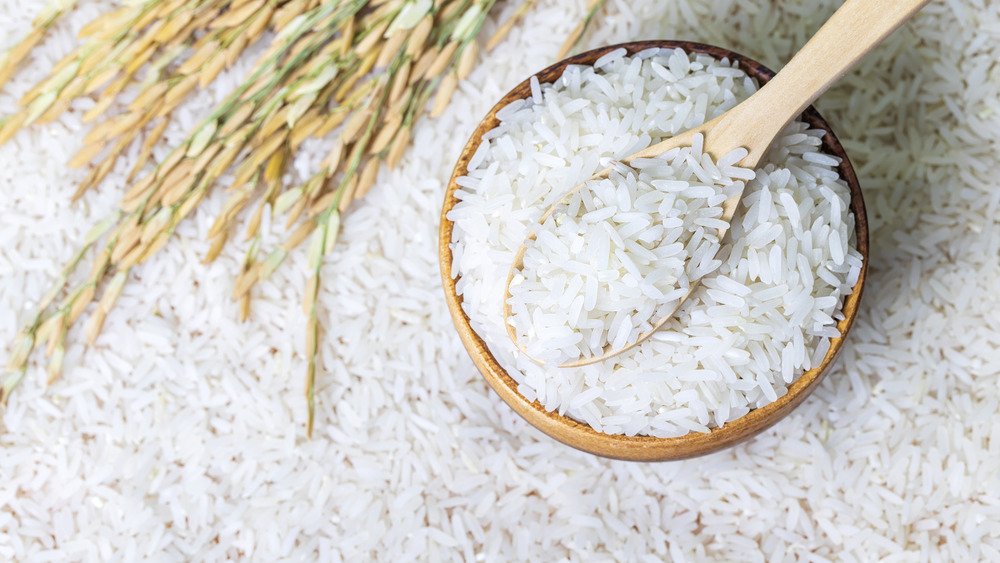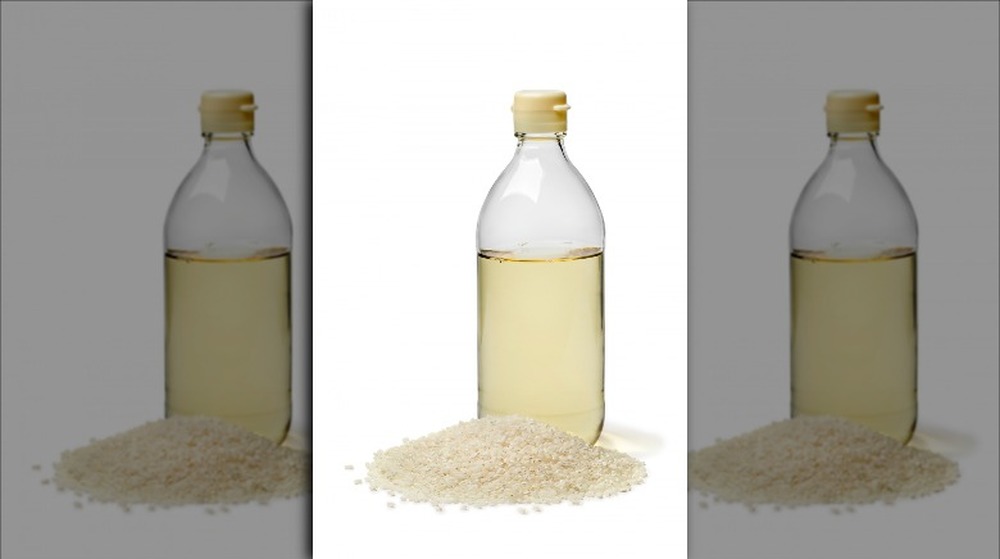This Is The Difference Between Rice Wine And Rice Vinegar
Rice plays a huge part in Asian cuisine, which is why it should come as no surprise that the region's best-loved beverages and condiments are made with this grain too. While they have similar DNA – both rice wine and rice vinegar are staples in Asian cuisine, and both are made with fermented rice – they can't really be used interchangeably.
Rice wine and rice vinegar begin with the same type of rice – glutinous or sticky rice, which has a GI rating of 86 (white sugar has a GI rating of 100), and less dietary fiber than whole grain rice (via Livestrong). But rice vinegar takes the fermentation process one step further because the bacteria which turn wine into vinegar are introduced (via The Spruce Eats). The best way to tell one apart from the other is to recognize that one can be drunk, while the other one can't because it is too acidic.
Different Asian countries have their own form of rice wine
Calling rice wine a "wine" could be a misnomer because while most wines are made with fruit that has been fermented, rice wine is closer to a beer in that it is made with a fermented grain before yeast is added in. This is particularly true of sake, where rice starch is first converted into sugar before it is transformed into alcohol by yeast (via Kayak).
Like the fruit-based drink that shares its name, rice wine can be enjoyed as a beverage; in fact, rice wines can be found in different forms across different cultures across Asia. In Japan, there is sake, which has an alcohol content of 15 percent. Koreans enjoy makgeolli; the Chinese aren't without Shaoxing, which has been in production for hundreds of years; and in Indonesia, there is Tapai, which is not just a wine – it is also presented as a fermented rice dish which can be enjoyed a more solid form as a dessert. In liquid form, Tapai can be added to desserts. Rice wines can be used in cooking, too, but the type that is used to cook with can sometimes not be drunk (think Japanese mirin, which is an ingredient, versus sake, which is a beverage).
Rice vinegar is a versatile ingredient
If you've ever tried to substitute rice vinegar with rice wine in cooking, you'd know that the two are as different in flavor as they come – one is acidic and the other one isn't. The Spruce Eats says rice vinegar starts off as an alcoholic base before organisms called acetobacters are added in. These microscopic creatures turn the rice sugars into alcohol, and then into acetic acid, which we know as vinegar. Rice vinegar is not as sharp but it is sweeter than regular distilled vinegar and is a standout on its own as a dipping sauce or salad vinaigrette or as part of a team that flavors noodle soup.
Like rice wine, each cuisine that makes its own vinegar has taken the condiment and made it its own. The Japanese komezu has a milder flavor. The Chinese love their rice vinegar so much they have three different types made with three different kinds of rice. Red rice vinegar is made with a blend of red rice, barley, and sorghum, which delivers a slightly salty flavor. Black rice vinegar is made with rice and malt and lends a sweet, umami flavor to whatever it is used with. White rice vinegar uses only glutinous rice and is the type best known in the west (via Spiceography).


